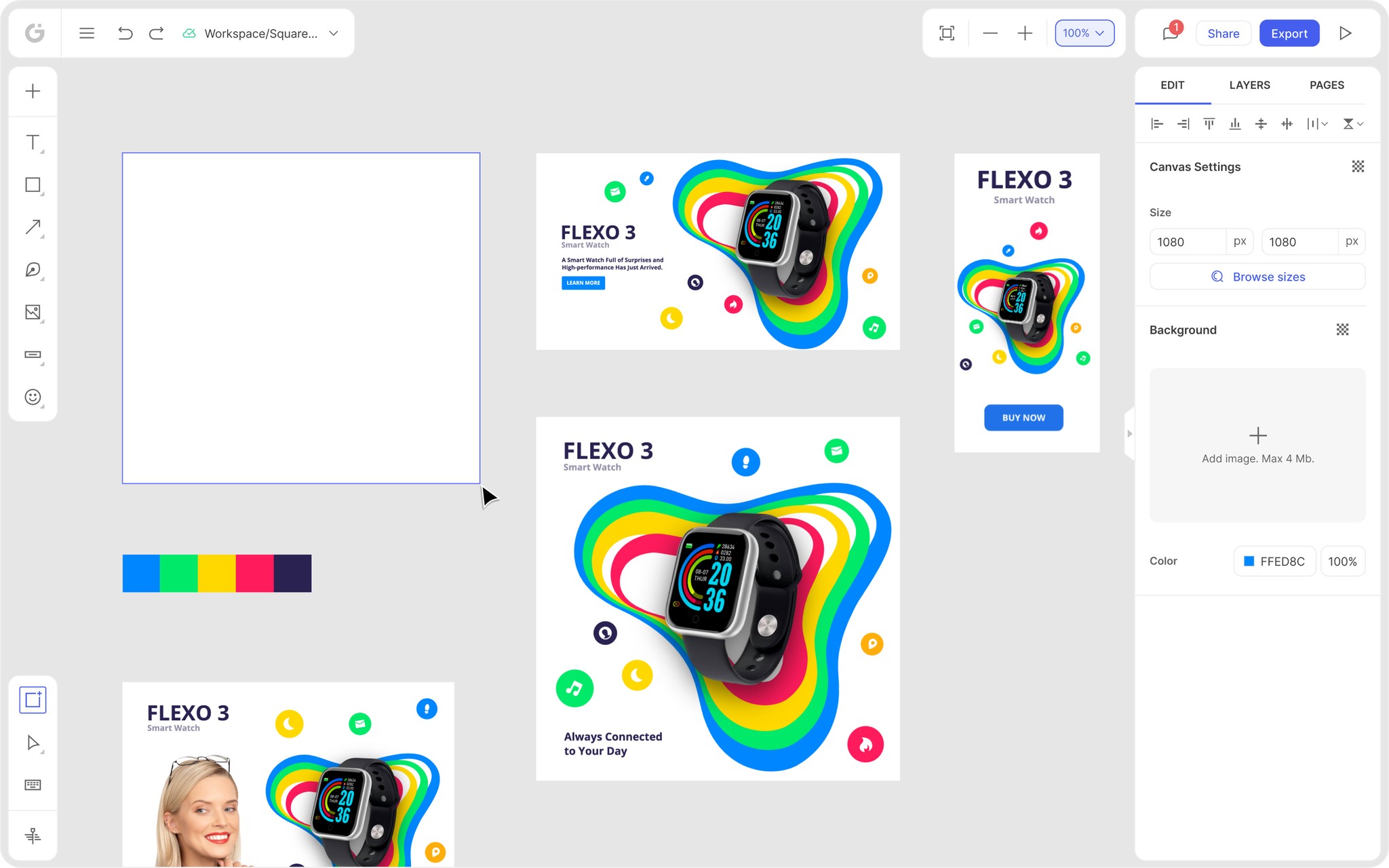Discover the essence of Amazon Storefront banners and their pivotal role in captivating potential customers. Learn the optimal size – 3000 pixels wide by 600 pixels tall – for seamless integration and stunning visual impact. Uncover expert tips for crafting compelling banners that reflect your brand identity and drive sales
Posted Nov 9, 2022
•
12 min read

Affiliate Marketing, Graphic design, Marketing

Create beautiful marketing graphics at scale.
30 Best Advertisement Design Tips & Ideas To Make Unique Designs
Potential customers see hundreds of ads every day on nearly every platform they use. In a way, this makes them immune to ads. They simply swipe past or cross them out without giving them a second thought.
If you want to grab the attention of potential customers, you need to implement a great strategy plus some convenient design tips to create those killer ads.
30 Advertisement design tips to grab your customer's attention
1. Make them look twice
This technique is pretty direct. You have to find a way to literally turn heads. Companies using images that make people think twice about what they’re looking at tend to have people staring longer. Using surrealistic graphics is quite effective. At first glance it comes across as one thing but lingering a little longer shows you something entirely different!

2. Use storytelling
Nothing is more engaging than a good story. Story-driven advertising has become more popular in recent times with people looking for a company's big WHY. If the vision of a company or brand resonates with your customers, they are more likely to make a purchase.
It might be a little tricky to do this with still ads, but it’s definitely worth a try. Use carousel posts or a series of advertisements to add a story line that leaves your audience eager to know what comes next.
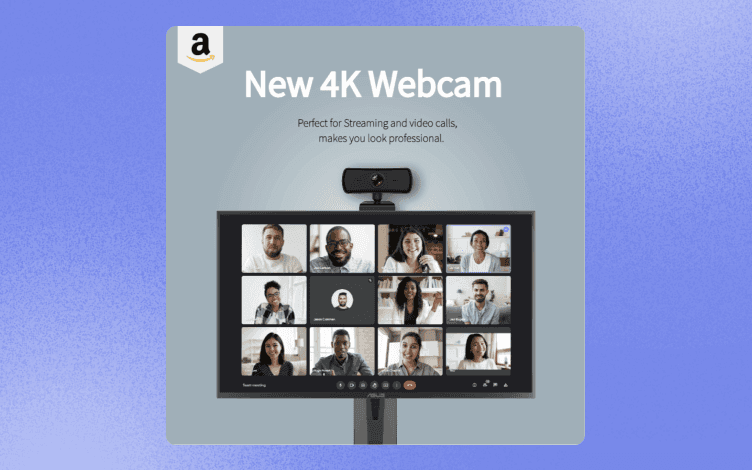
3. Connect to niche markets
Like any other marketing asset, ad designs need to be targeted to suit your audience. Highlight their pain points and how your product helps them solve their problems. If your target audience does not resonate with your visual, they will simply swipe past.
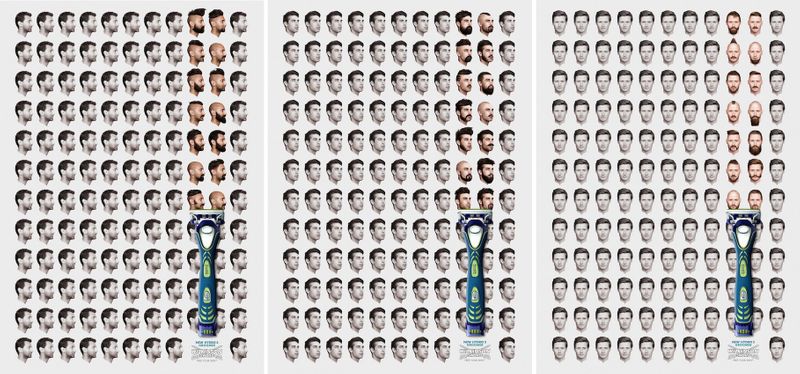
4. Choose visual metaphors
In the advertising industry, visual metaphors are an important element. One theory is that you should first concentrate on written metaphors before working on visual ones.
Follow this advertising design tip as your mantra: before you use a visual metaphor, focus on the idea you want your customers to get. Nothing is worse than presenting your design to others only to find that they don't understand it.
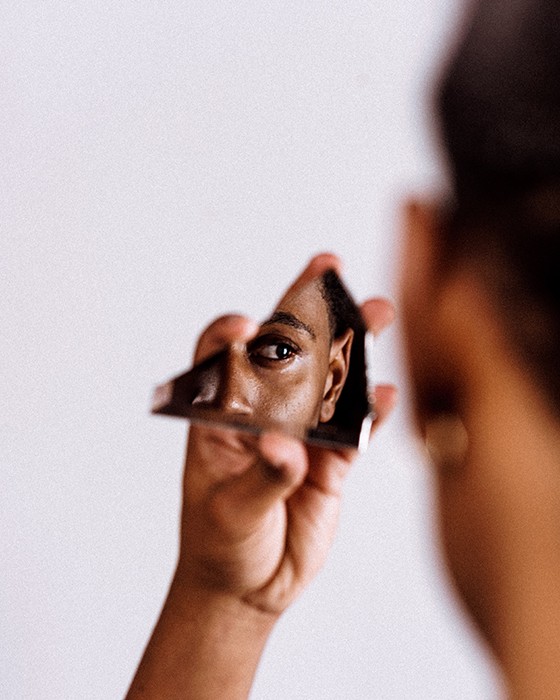
5. Use secret visual links
A sure way to build smart publicity is to find secret visual relationships that surround your product or service.
Hidden relationships will help you creatively market your brand. Try brainstorming concepts that have forms, lines or curves in your message and aim to incorporate these two concepts to boost the effectiveness of your message.
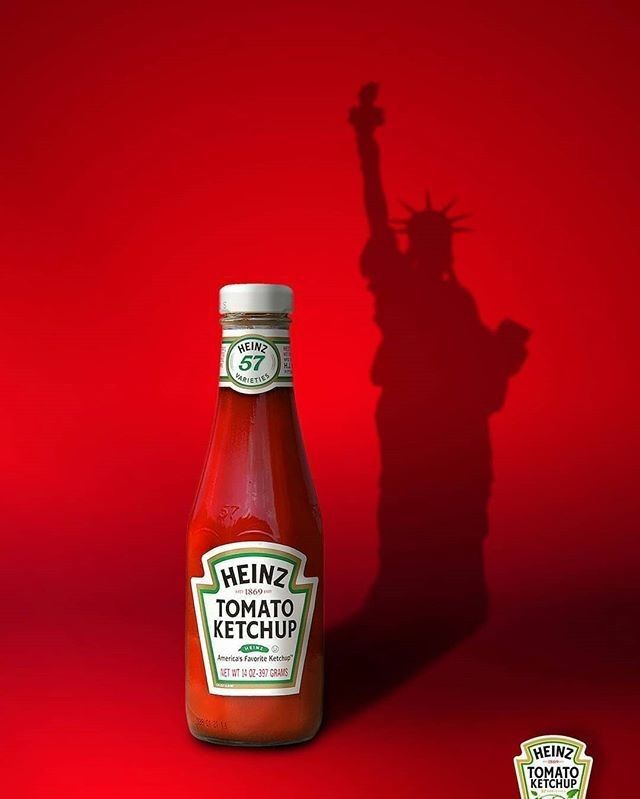
6. Add famous characters or concepts
There are some universally well-known concepts understood by all. Including them in your ad will make people enjoy it more, as they feel like a part of it, something like being ‘in’ on the joke.
One example is making subtle pop culture references. This gets the fans excited to be able to recognize a certain thing aspect and relate to it.
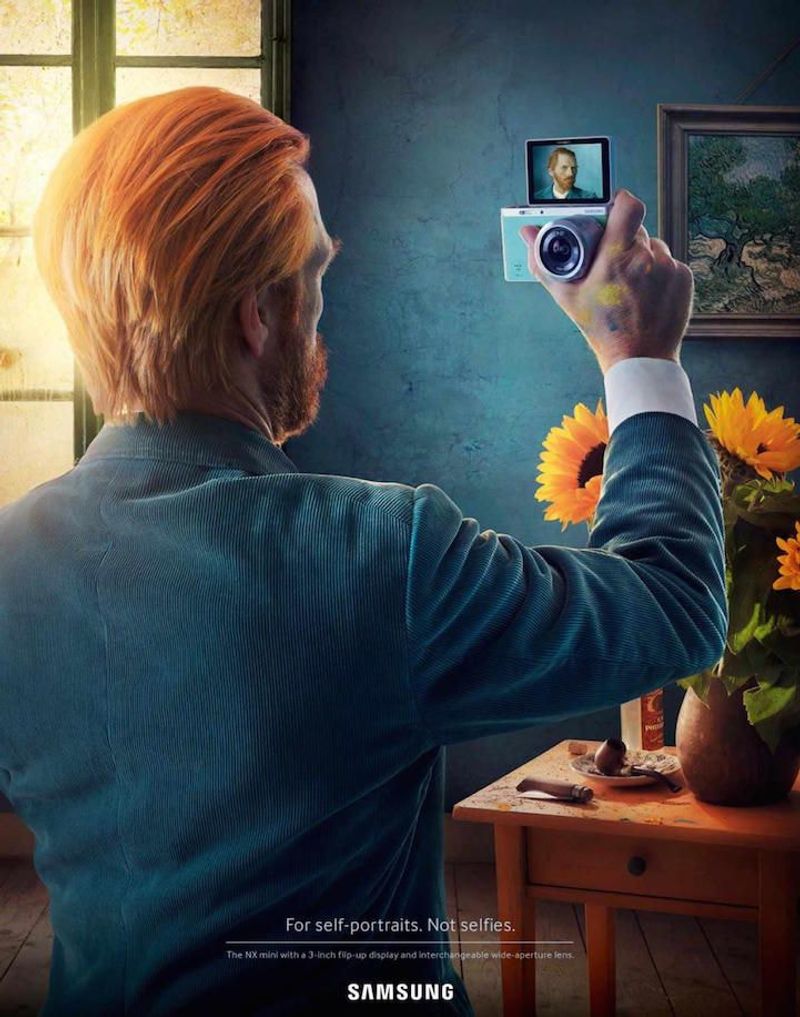
7. Use measurement skillfully
One of the basic concepts of design is nailing measurements. Experimenting with the scale can not only deliver a powerful message but also generate an amazing image. Professional designers frequently recommend scaling up the main items to highlight details while making others element of the ad merely complementary additions.
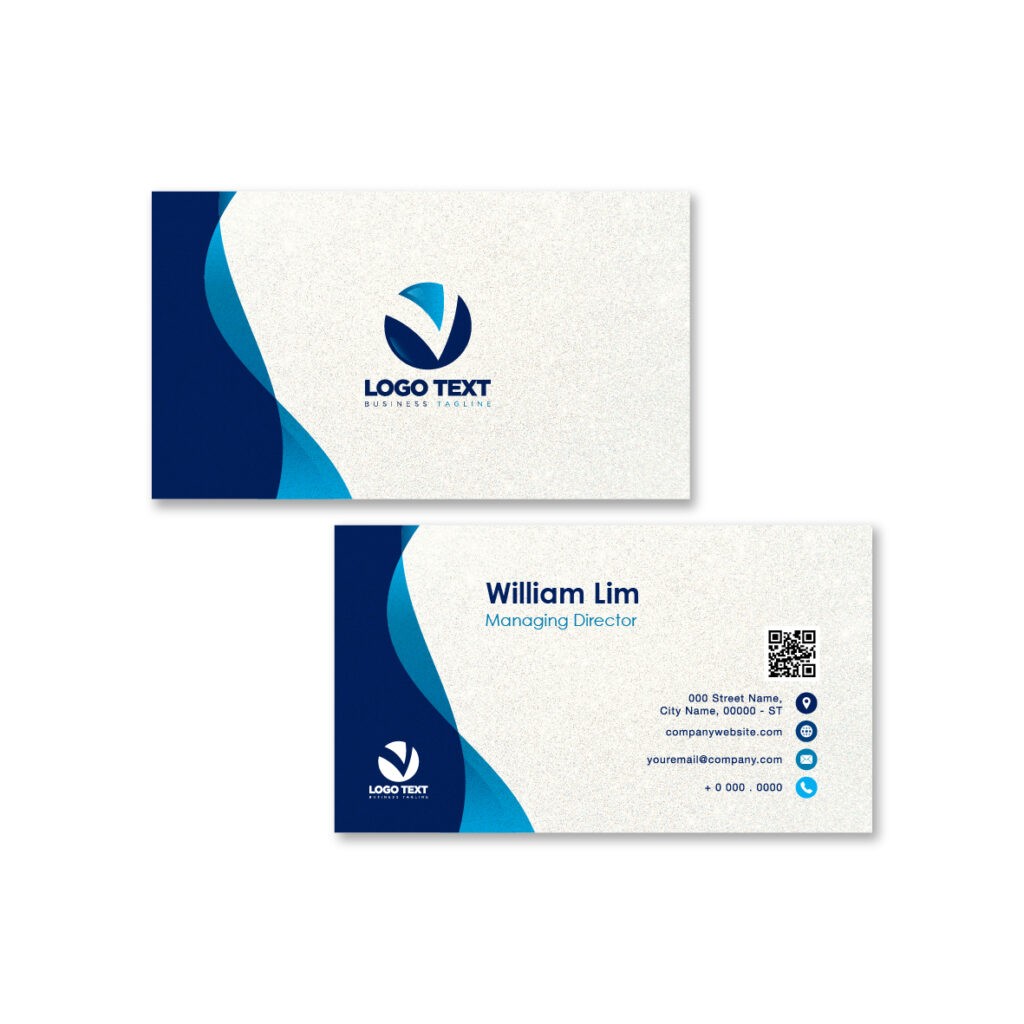
8. Don't be afraid to go all out
Exaggeration, if used right can be the difference between a good ad and a great one. It's an interesting way to ensure that your ad remains amusing, effective and not too bland. Don't hold back when it comes to doing the most for your ads.
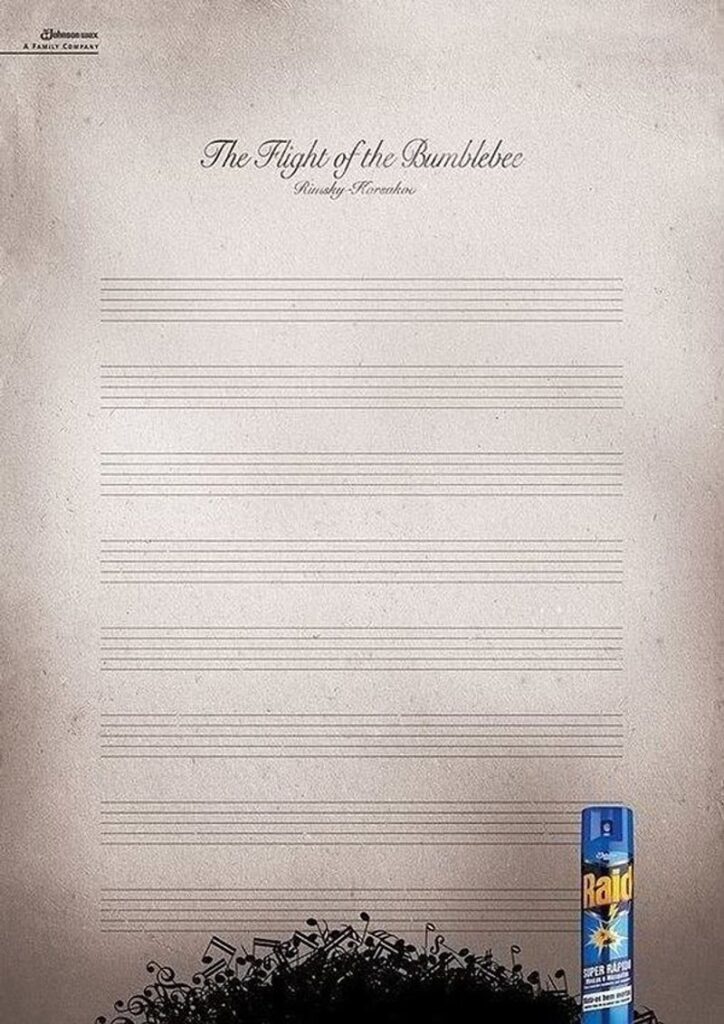
9. Stream a little quirkiness
There are plenty of boring ads out there. You don't need to add more to the list. If it's in line with your brand personality, tweak your message to make it weird, mysterious, and maybe even bewildering! Make the your conversation with customers fun!

10. Present poof - words don't mean anything
There is a common rule in many artistic schools of thought that says never justify something in writing when you can demonstrate it. And in a way, this principle relates to advertising as well.
You have to realize that you aren't the only one marketing a product like yours. There are many other companies making similar claims which may or may not be true. Even if your product actually lives up to your claims, your audience won't believe it unless they have proof. So give it to them. Display the benefit of your product and maybe add in a few testimonials to boost authenticity.

11. Make it engaging
If your advertisement doesn't engage with your target audience, you most likely will not get any conversions. Ads have to be designed to engage people both visually and emotionally.
Use the right tone that they can relate to. To top it off, you can either add a clickable CTA for digital ads and instructions on what to do next if it's a physical ad.
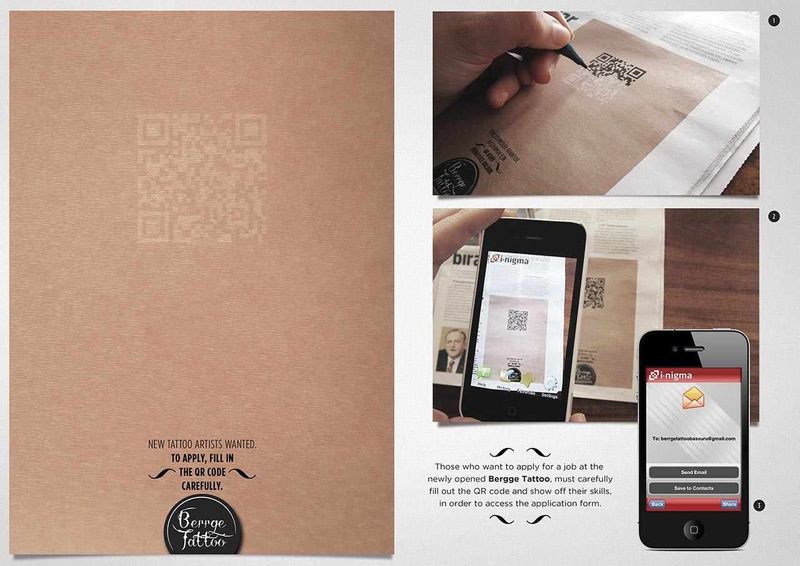
12. Keep the text short and relevant
The first generation of ads was a simple copy, a standard block that described the product, its functionality, where it could be accessed, etc. However, society has changed, intervals of interest have been reduced and time has become more precious to people. They aren't going to waste precious minutes reading lengthy descriptions.
Remember to keep copy simple and concise. You need to communicate your message as quickly and effectively as possible, so using fewer and simpler words is always the best way to go.

13. Use familiar icons
Symbols are timeless. They appeal to people across the globe regardless of their culture and language. Icons are an effective way of communicating meaning without language barriers standing in the way.
What's more? Icons convey a message much faster than text can. Using icons in your ads will not only improve the aesthetics but will make your message more timeless and effective.
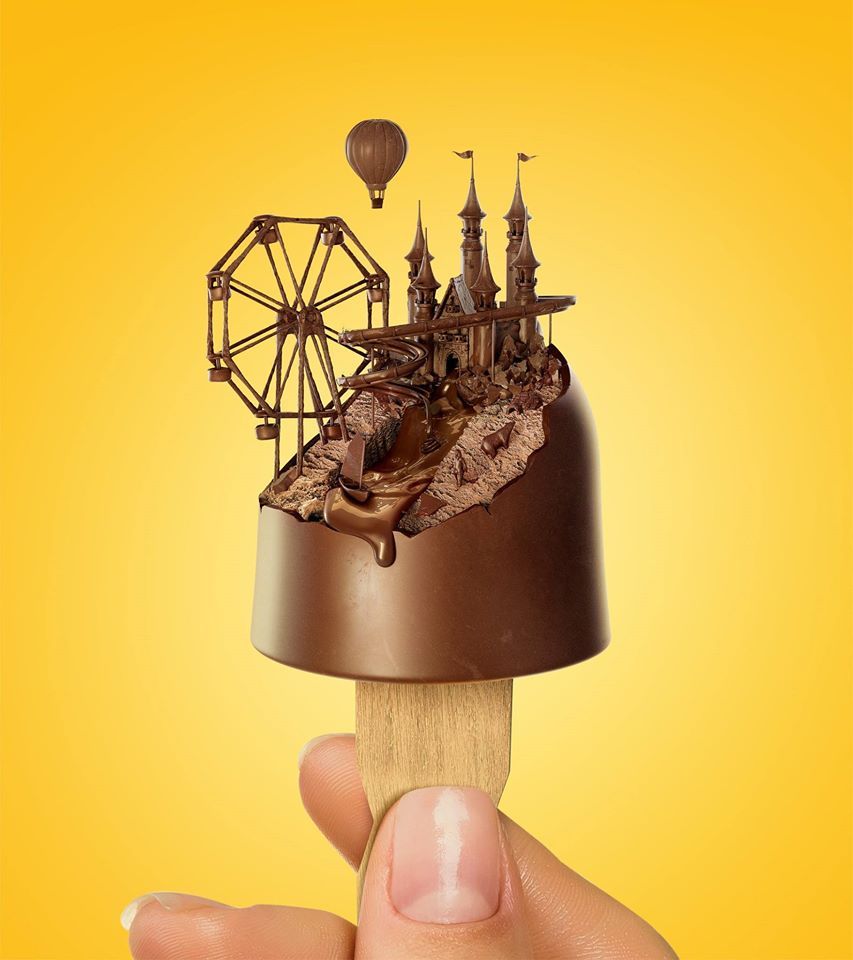
14. Add optical illusions
If it is in line with your brand voice, using optical illusions can give your audience an unforgettable experience. Presenting an optical illusion gives them a reason to focus longer on your ad. This makes them subconsciously take in the messaging and main product being advertised.
Giving them a fun challenge also makes your company or brand remain in their minds longer after they've swiped past your ad.
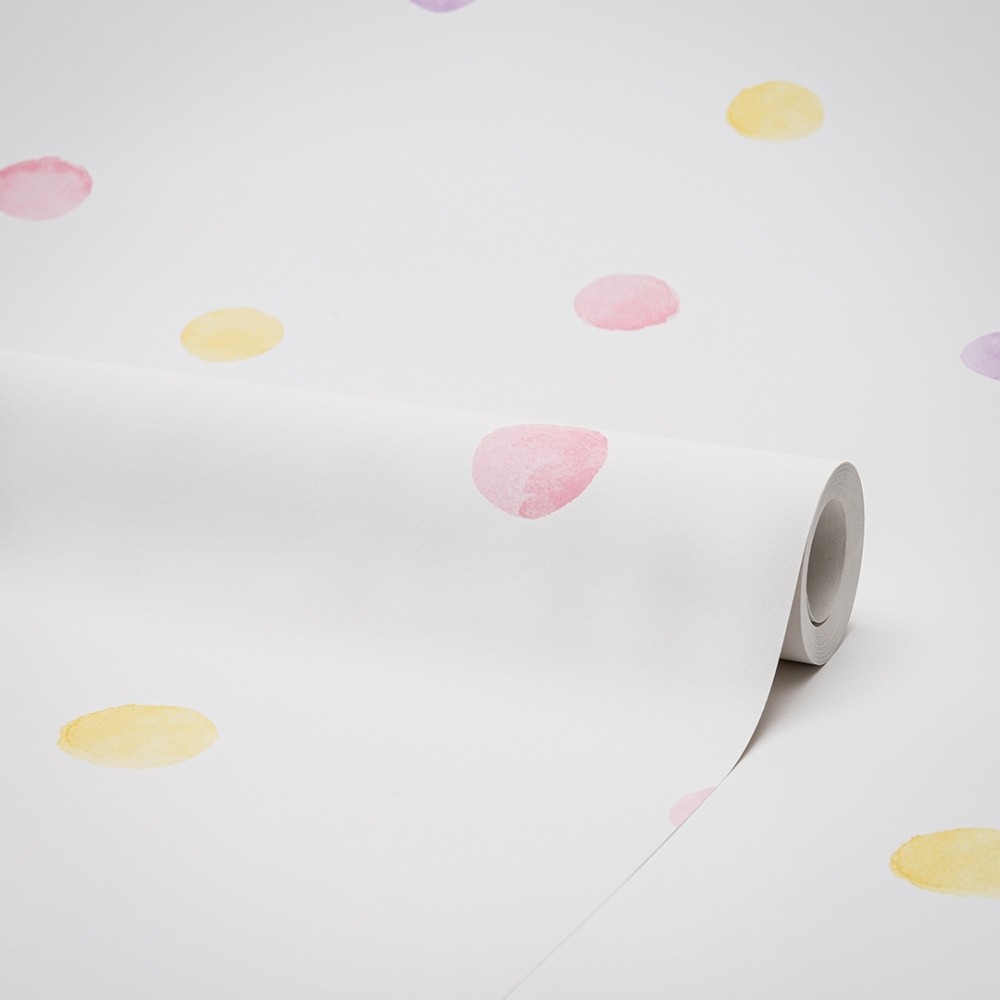
15. Be mindful of the color scheme
Color is an incredibly valuable element in all designs, especially advertising. When creating your ads, make sure you choose the color scheme wisely. Of course you can use your brand colors, but deviating from your standard scheme is also possible if done right.
Choose colors that resonate with the product being advertised. For example, if you're advertising ice cream, black and white wouldn't be an appropriate color scheme but pastel colors would work great.
Colors are eloquent so use them wisely.

16. Enable Whitespace intentionally
Don’t be afraid to leave empty space! Using whitespace intentionally is a great method to draw focus on what really matters. Creating an ad with a majority of the space being blank also lets the image of your product shine through. This highlights the features of your product and makes the image self-explanatory without the need for supporting text.
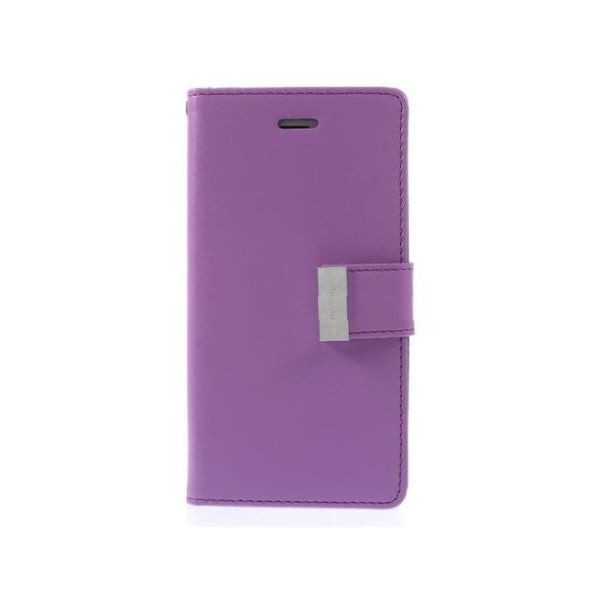
17. Create motion
It's no secret that eyes are always drawn more towards motion than still images. So if you’re creating a digital advert, we 200% recommend adding animation. Even if the motion is as simple as a flag flying in the wind, or water dripping down a cool can of drink, it all contributes!
If the image is a static advertisement, create some depth to add a 3D effect. Good shading and the use of shadows comes in handy here.
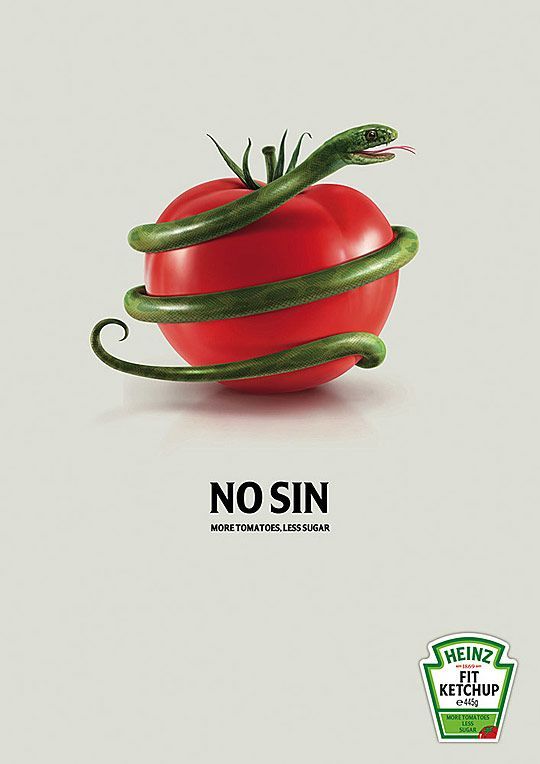
18. State it in a modern way
It's possible that the message you are trying to sell is exactly the same as several other companies in the market. In order to stand out, you need to find a creative, fresh perspective to sell this message and spark interest in customers.
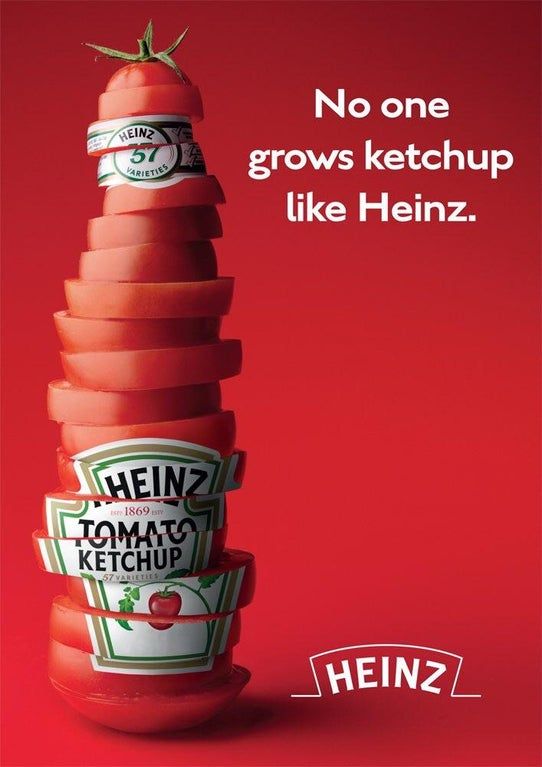
19. Be creative with typography
The font used plays a big role in how the message is read and perceived. It affects the personality and tone of your design, so don't be tricked into thinking that a font doesn't matter as much as images do.
You can also play around with the typeface and get creative. Letters that join up to make a shape, or sentences placed a certain way to create the silhouette of your product are great ideas that add a playful touch to your design.
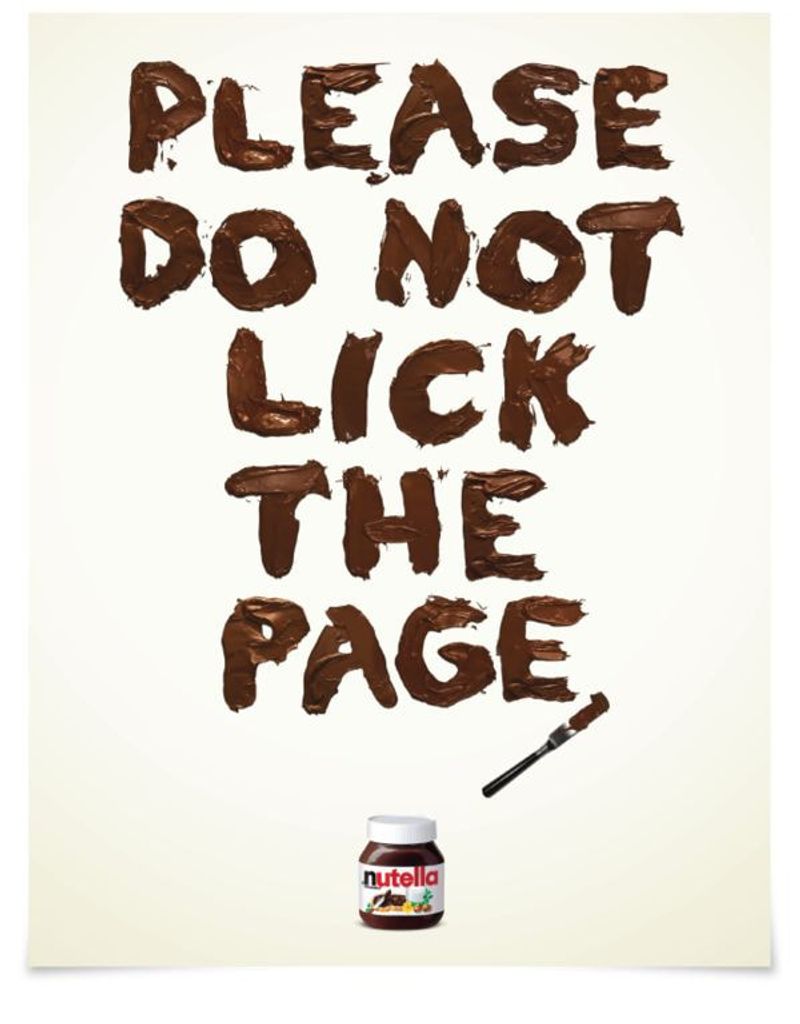
20. Make your platform fun
With the multitude of boring ads out there, something fun and creative is always a breath of fresh air. As long as you stick to your brand voice, you can try out different elements of fun that involve both the images and the text.
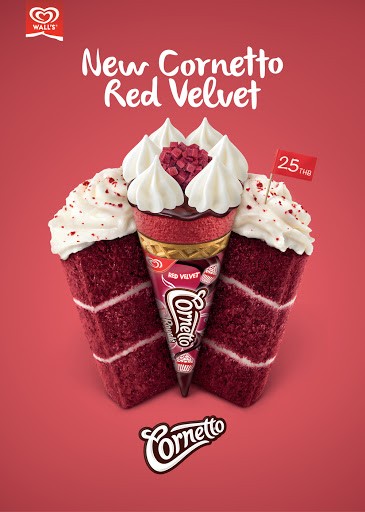
21. Use annotations and lines
Sometimes, people tend to overlook the very feature of your image that would have made them hit "Buy'. This is where annotations come in. You can use arrows or lines to point out the best features of your product.
This helps customers to focus on what's important in your product and conveys messages in a quick and simple way.
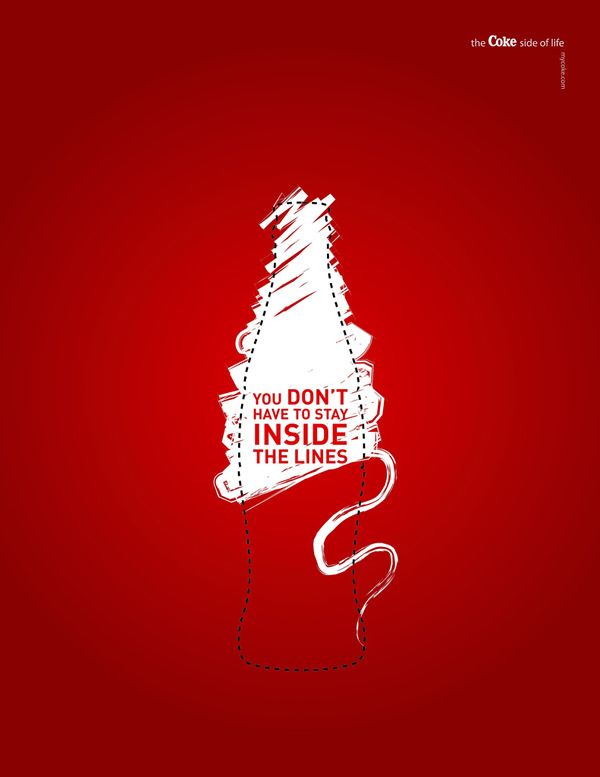
22. Evoke emotions
This is an age-old hack when dealing with humans. Evoking emotion through your advert appeals to the heart rather than the mind and prompt people to purchase your product based on feelings rather than logic.
This is similar to the blind man who wrote ‘It’s a beautiful day but I can’t see it’, and received a lot of charity. Connect with people in a way they understand using the universal language of emotions. You can use this approach for both the text as well as images.

23. Make the most of patterns and repeat patterns
Patterns are a strong visual tool in design. Using your product, or a dissected element of it, invert it and place it together to form a pattern. You can add the different elements of a product, and paste them back and forth to create a backdrop for the advertisement.
While it may initially come across as aesthetic, on a closer look, your audience will notice the clever use of your product. You can use a subverted version of the metaphor ‘finding a needle in a haystack’ where instead, your product is one that stands out among all other brands.
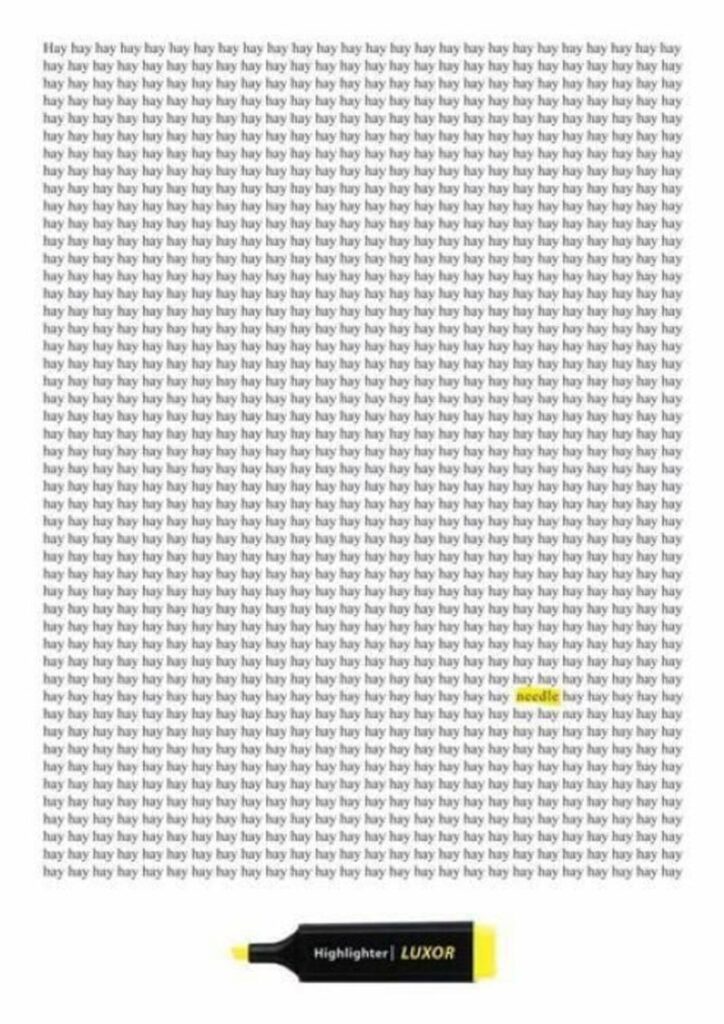
24. Create FOMO
Fear Of Missing Out. This is a classic strategy used by most companies in their ads. Show your audience what they’re missing by not buying your product! Depict it through imagery and emphasize the feeling of being left out of the latest trend.
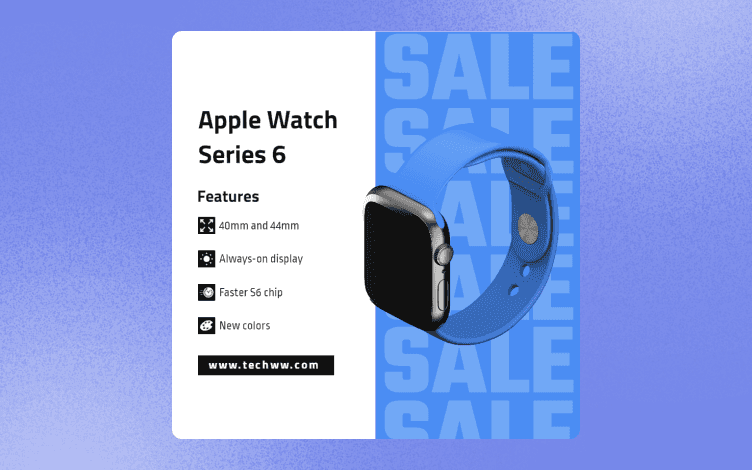
25. Be bold
Making brilliant statements is an excellent way of getting recognition. Make sure your main message doesn't get lost among the other elements of the design. Say it loudly, use a big, daring style, position it at the top, make the rest a little smaller. All in all, make a statement that is clear and consistent.

26. Leave it up to their imagination
This is where you need to combine clever and creative. No one can resist an image that leaves the conclusion up to their own imagination. Use images and words that leave viewers hanging. Let them come to their own conclusions.
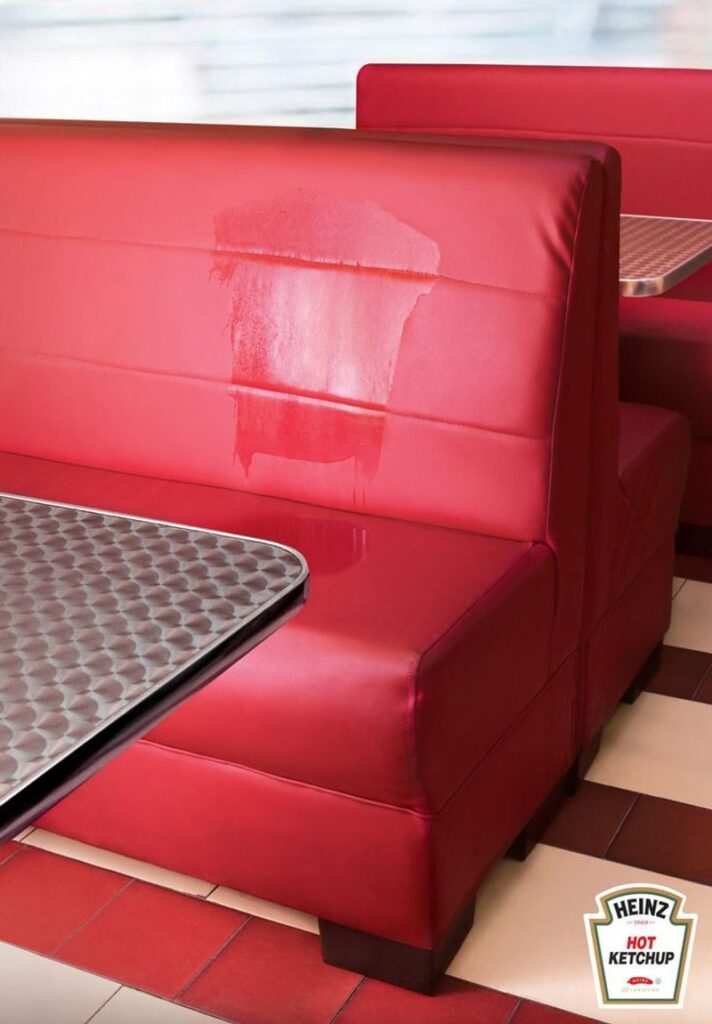
27. Utilize negative space
For those unfamiliar with this term, the vacant space around an image is called negative space. Just like whitespace, negative space can be an enormous favorable factor in the design process.
Professionals suggest using the negative space extensively when creating a logo and poster design, and this exposure for ads is always encouraged as a timeless advertisement design tip.
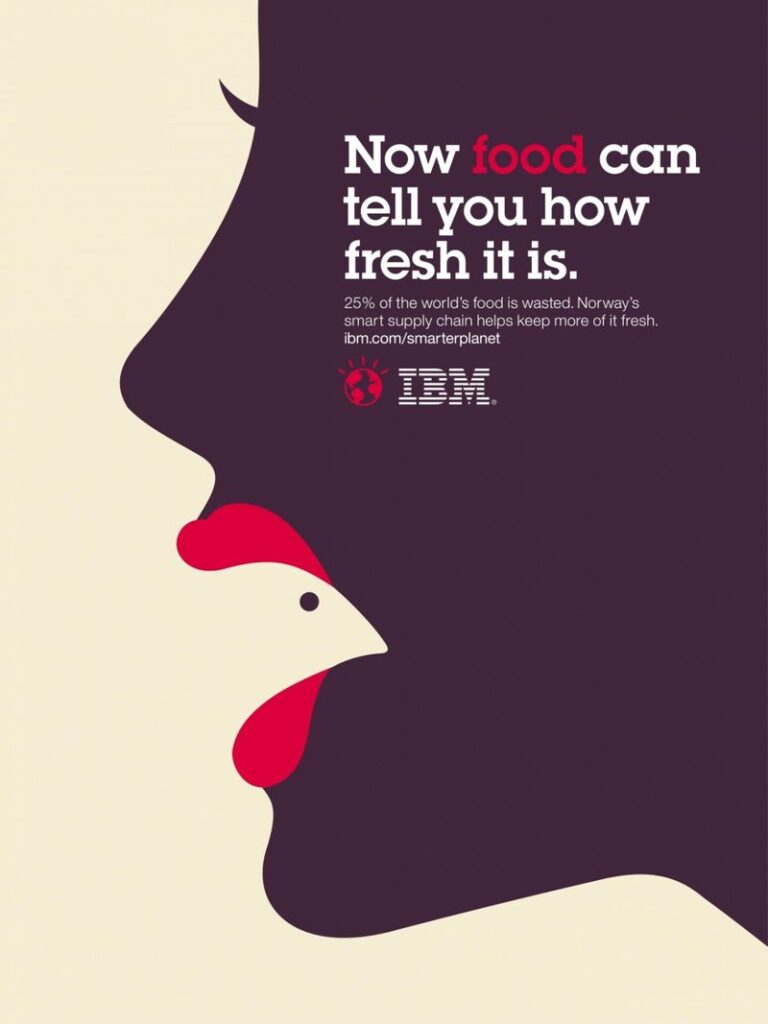
28. Make them stop and stare
The hook everyone is trying to achieve in their ads. Use images that require viewers to take a closer look and linger longer on your ad.
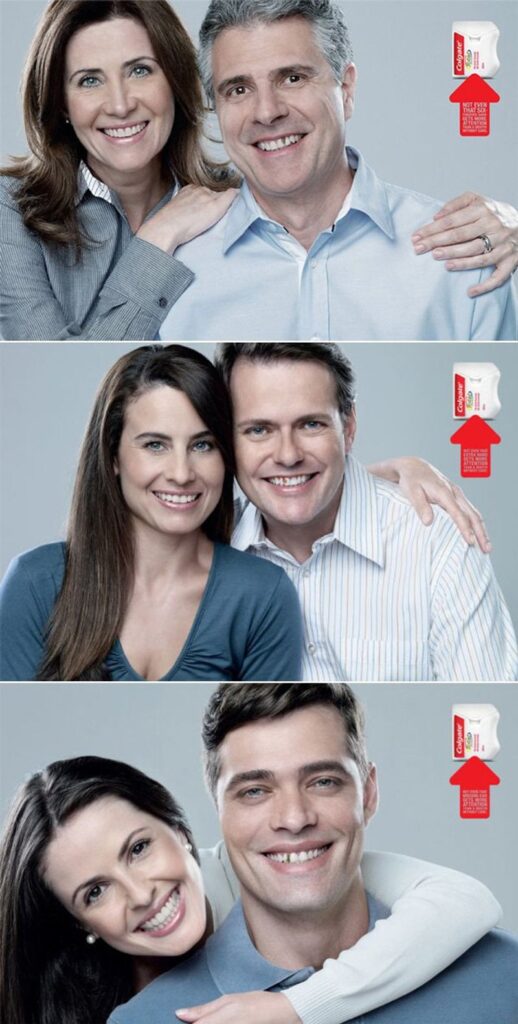
29. Let the picture communicate
There is no hard and fast rule that states an ad has to have both text and images. If your image is powerful enough, there is no need for words. Letting your visuals do the talking also ads a sense of confidence and boosts your authority.
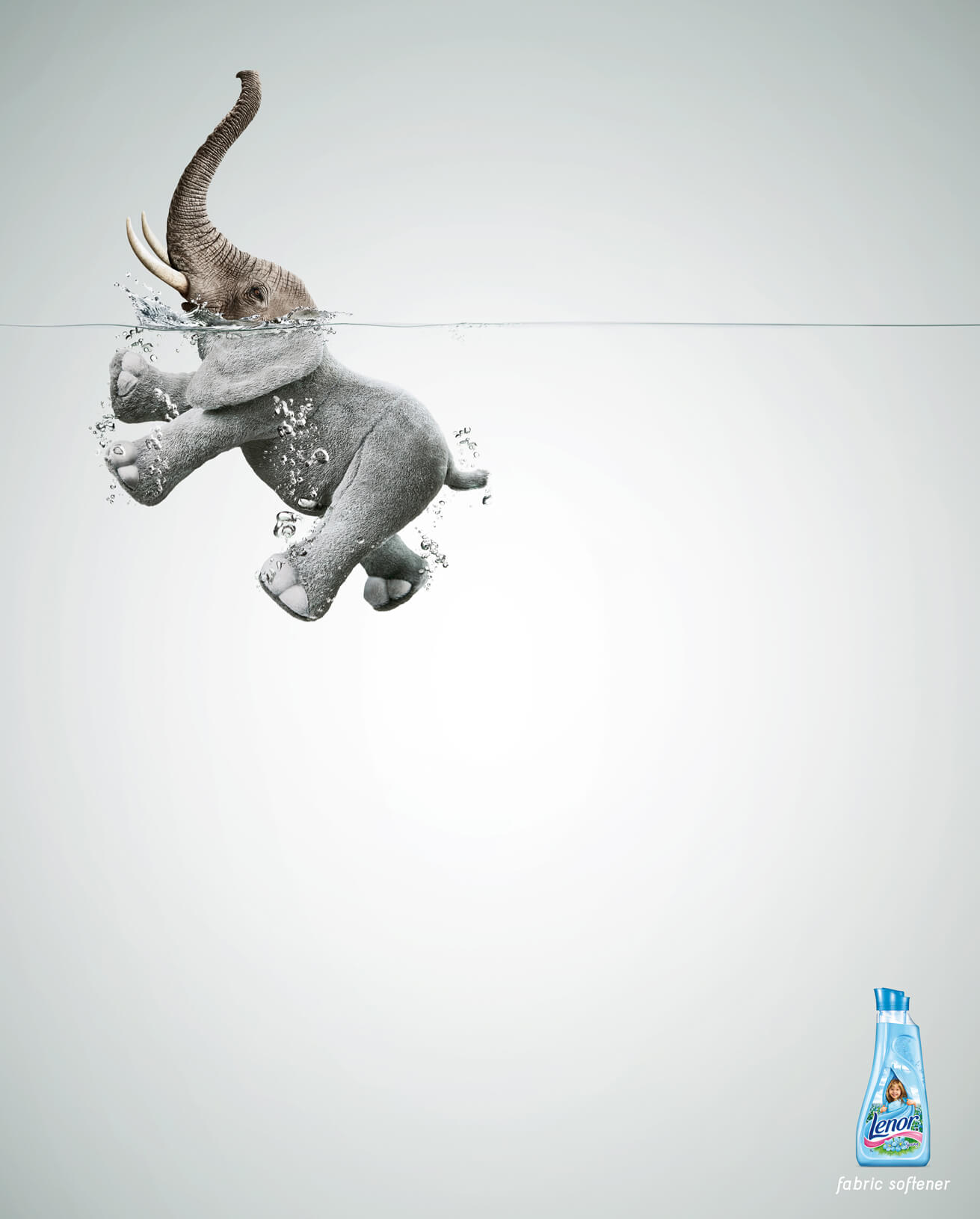
30. Add engaging lines
And here’s our final advertising design tip. Just like powerful images do not need to be supported by text, words do not need to be supported by images if the are engaging enough.
Taking the minimalist approach, ask yourself what is necessary for your design and what is not. This helps you get rid of unwanted components. Although some elements may bevisually pleasing, ask yourself if they contribute to the overall messaging.
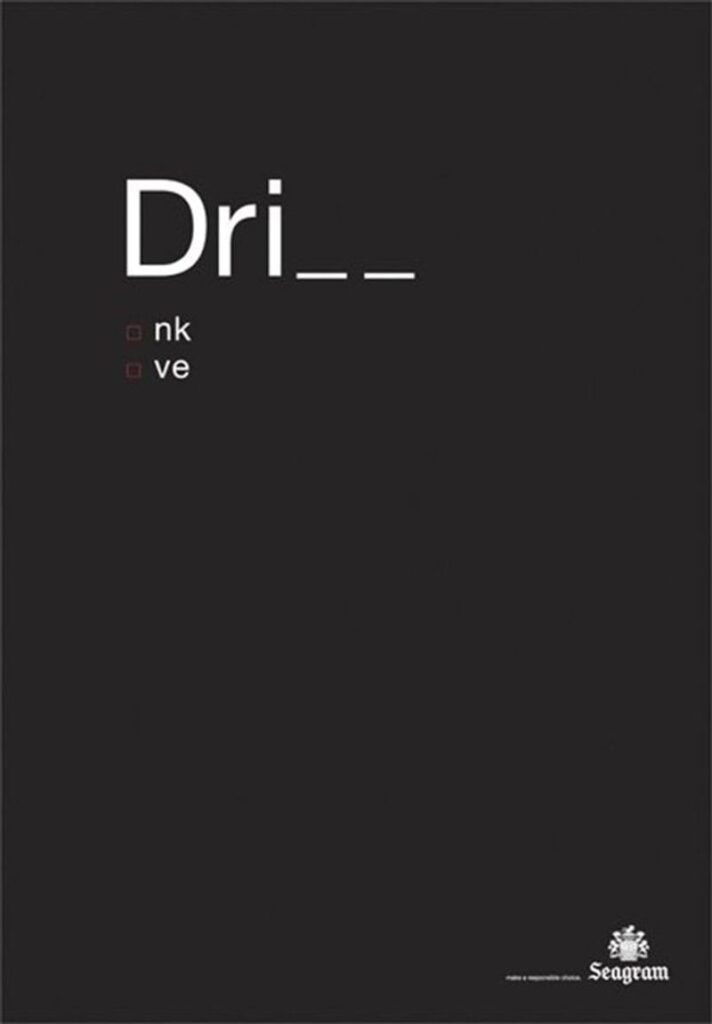
Finishing thoughts
Like in any other marketing asset, there are comprehensive rules, strategies, procedures, and techniques for ad production.
However, while it certainly helps to produce a visually effective advertisement that plays by the rules, the success of an ad comes down to artistic thought and the drive to be unique. Uniqueness is always inspiring.
You can try your hand at ad design by starting of with an easy-to-use design tool such as Glorify. With simple tools for beginners and complex features for individuals, Glorify allows anyone and everyone to create stunning visuals regardless of prior design experience.
If ad design is what you're into right now, Glorify's template library is definitely something you should check out. It provides thousands of niche-based templates that are 100% editable and can be customized to suit your brand.
In addition, there are a ton of other useful and fun features that can boost your ad design game. These include an instant background remover, a logo maker, Brand Kits, Smart Shapes, an advanced pen tool, template bundles, mockups and a whole lot more!
If you want to create effective and captivating advertisements for your brand, get started with Glorify today!
FAQs
1. What is meant by advertisement design?
The creation and arrangement of visual artwork used to promote and market products.
2. What is interactive marketing?
Interactive advertising uses engaging media, whether online or offline, to connect with customers and support commercials, goods, brands, services, and public services.
3. What are the steps needed to create an ad?
Before you create publicity, there are a few things to bear in mind. Here are the main steps you have to take:
1. Conduct a commodity and business SWOT review
2. Set key targets
3. Conduct market analysis and consumer research
4. Identify your target audience
4. What makes a good advertisement design?
Something that draws people in. It should be visually captivating while answering questions about the product and leaving the audience curious to find out more.
5. How can I decorate my advertisement?
Using a quick and effective design tool like Glorify is the ideal way to decorate your ad. Use fonts, colors, elements and effects that portray the personality of your product and brand.
6. How do you design a creative ad?
After conducting market research and identifying your target audience, use an effective design tool like Glorify to make sure your visuals are captivating and of high quality.
Features
Explore templates
Alternatives
© 2024 Glorify App - All rights reserved






